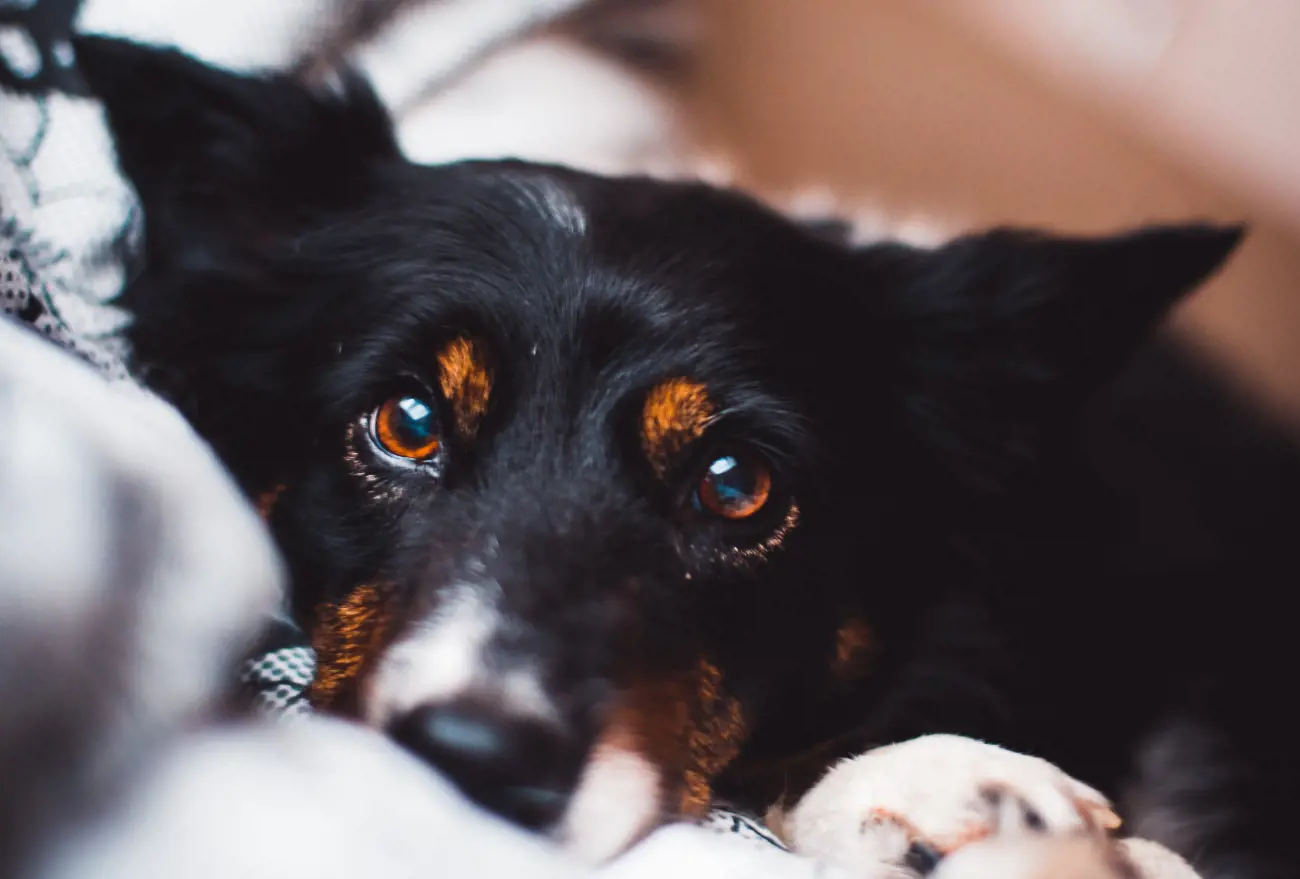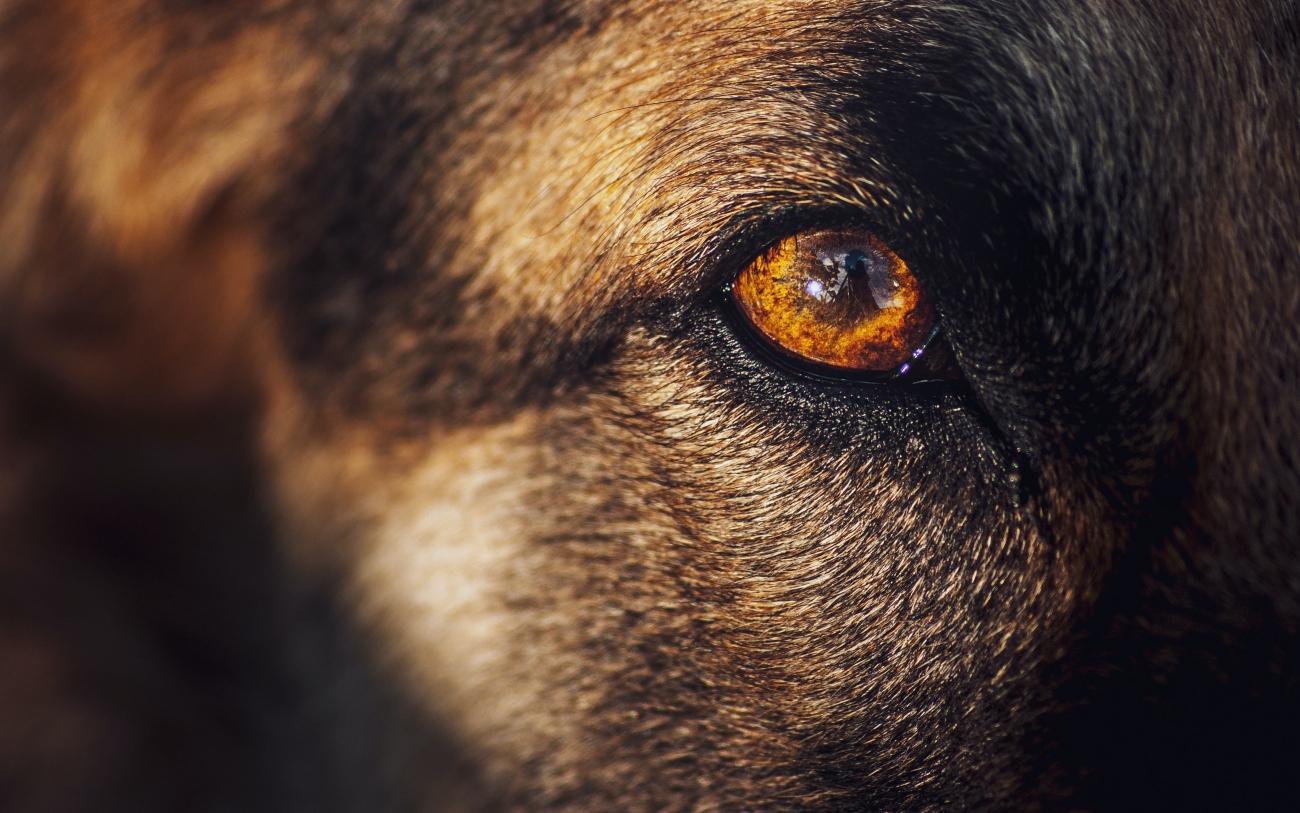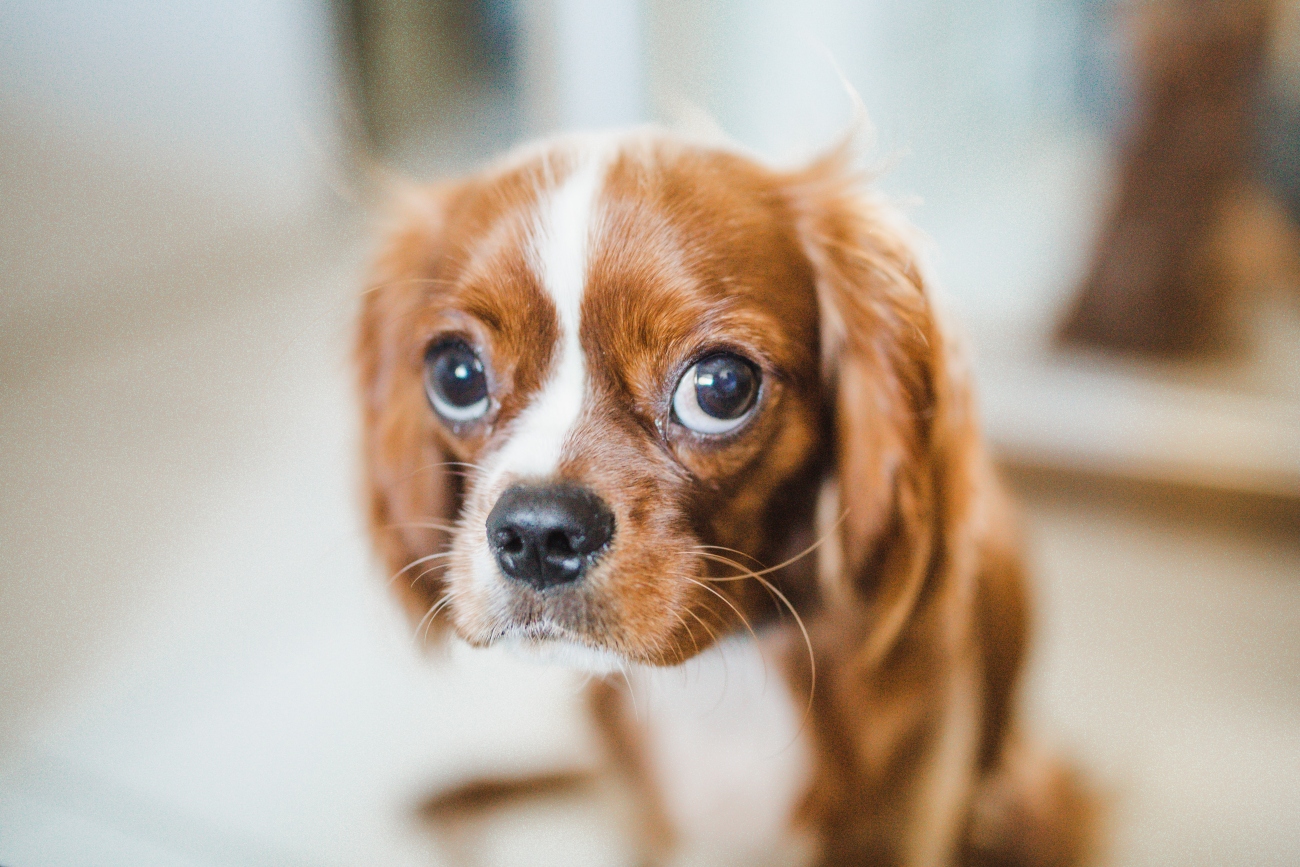Eyelash problems for dogs
5th November, 2021

We all love looking into those big puppy dog eyes, don’t we? But have you ever considered that your dog’s eyelashes could be a source of pain for your pet?
Eyelash problems can be a real issue for certain breeds. More than a third (37%) of English Cocker Spaniels, for example, suffer from the eyelash condition distichiasis at some point in their lives, research shows.
Cocker Spaniels’ long eyelashes are a thing of beauty. But these poor pups sometimes have to suffer for their luscious lashes when extra hairs start to grow from the eyelash area – and they’re not the only breed to have lash issues.
In this guide to eyelash problems for dogs, we’ll look at the breeds which are predisposed to conditions such as distichiasis, what owners can do to prevent any eyelash issues becoming more than just a minor irritation, and the outlook for your dog should they require treatment.
Even if you have the best pet insurance that money can offer, you really don’t want your dog to have to undergo treatment if it’s at all avoidable.
So, let’s look at the eyelash conditions that you need to know about.

Distichiasis
Let’s start with the condition we’ve already touched upon. Distichiasis is the name for when extra hairs grow out of a dog’s eyelash area. If two or more hairs grow out of the Meibomian gland opening, located along the margin of the eyelid, it can cause all kinds of irritation.
It all depends how the extra hairs grow. If they are soft and grow outwards, you probably won’t even notice them, and nor will your dog. But if the hairs are coarse and grow towards the eye, they can damage the surface of the eye and cause corneal ulcers.
While distichiasis can affect any dog, it’s most common in the bulldog, cockapoo, dachshund, poodle, shih tzu and the aforementioned cocker spaniel.
What are the signs of distichiasis?
All of us at some point have experienced an eyelash or other foreign object getting in our eye – it causes all kinds of irritation, and it’s no different for dogs. They’ll probably be pretty forthcoming about their irritation, either through excessive blinking, squinting, weeping or the affected eye might look bloodshot.
As soon as you notice your dog being less than pleased with one or both of their eyes, you should try to get a closer look. You might not be able to see the rogue eyelash in question – but this shouldn’t stop you making an appointment with the vet.
How is distichiasis treated?
Treatment of distichiasis very much depends on the severity of the condition. There are four ways to treat distichiasis, as the PDSA explains:
-
Surgery – cutting away the lash and its root.
-
Cryotherapy – freezing the lash in order to permanently remove it.
-
Electrolysis – destroying the root with an electric current.
-
Physically removing them – plucking out the hair, without actually getting to the root of the problem.
As you might imagine, general anaesthesia is usually required to carry out any treatment to a dog’s eye. Very few dogs are cooperative enough to allow a vet to do what’s necessary with only a local anaesthetic.
Procedures that destroy the hair follicles will prevent hair regrowth. But there’s no guarantee that the issue will be solved in the long-term, so retreatment can be necessary in some cases. Once the treatment has taken place, you will need to take your dog back to the vet for a few follow-up visits, to make sure that the hairs are not going to regrow.
Other treatments include lid splitting and thermocautery, but these can destroy the normal lid margins, causing more problems than it solves and resulting in severe permanent scarring. So, they are best avoided.
The eyelids will be inflamed after the procedure, and your vet will give you something to treat them. Your pup might also have to wear a protective head cone to stop them scratching/rubbing their eyes.

What can happen if the condition is left untreated?
If left untreated, distichiasis will start to affect your dog’s vision. Over time, the rogue hairs will damage the surface of the eye, manifesting as a corneal ulcer.
Eye ulcers vary from being a minor scratch to deeper and more serious damage – it often depends on how long the condition causing the ulcer has been left to fester.
The front of the eye is very thin, and it’s even been known for an ulcer to cause the eye to burst. A burst eye will require immediate referral to a specialist eye clinic who may decide that the eye needs to be removed. There are cases in which the eye is salvageable, but it depends on how early it is caught. Emergency surgery to repair a burst eye doesn’t come cheap, which is why pet insurance can help protect you from any unexpected bills.
What is the outlook like for your dog?
How well your dog recovers from distichiasis depends on how early it was caught and the success of the treatment. If your dog has suffered once from distichiasis, there’s a fair chance they will have future problems and require ongoing treatment.
To give your dog the best chance of making a full recovery – and retaining all of their vision – you need to act quickly once you spot any of the listed symptoms. Follow the after-care plan from your vet and don’t stop treatment before you should.
Generally speaking, your dog’s outlook is likely to be good, provided they are treated before their eye is badly damaged. However, you need to be realistic that abnormal lashes can re-grow after treatment, and it’s also possible your dog will have more than one type of eyelash problem in their lifetime.
Ectopic cilia
A cilium is a hair, and ectopic means growing in the wrong place. Ectopic cilia are when hairs grow abnormally through the conjunctiva and rub up against the cornea. These out-of-place hairs usually grow on the upper middle eyelid.
To avoid lasting damage, any hairs that have gone astray must be removed as quickly as possible. Ectopic cilia are often seen in puppies and younger dogs.
What are the signs of ectopic cilia?
As with distichiasis, you should look for signs of eye irritation in your pup. As well as excessive blinking, squinting, weeping, they might try to rub the affected eye against the furniture, or even paw at it to rid themselves of the itchiness.
Unfortunately, no amount of rubbing will cure the problem, and an appointment with the vet will need to be made as soon as possible.
How are ectopic cilia treated?
To assess the damage caused by the ectopic cilia, the vet might temporarily stain the cornea helping them determine if any corneal ulceration is present.
The severity of damage to the eye will determine the course of treatment. But, first and foremost, the offending hairs will need to be removed. They might be removed surgically using a scalpel or punch biopsy, or frozen off through cryosurgery, which will also kill the follicle.
If your dog has developed corneal ulcers, they might be prescribed antibiotics and pain medication. Again, they’ll probably need to wear a protective head cone to ensure that the eye is given the best chance of making a full recovery.
What’s the outlook for your dog?
Similar to distichiasis, as long as you have spotted the signs of ectopic cilia early in their development, the prognosis for surgical correction is pretty good.
Once it’s happened once, however, you can’t rule it out that it will happen again – particularly if you have a breed of dog that is predisposed to the condition.
Trichiasis
Instead of growing out of place, as with ectopic cilia and distichiasis, trichiasis is when the eyelashes grow inwards towards the eye, rather outwards as they are meant to do. Who knew that eyelashes could have so much of a life of their own!
Breeds with lots of facial skin folds, such as the English bulldog, shar-pei, chow chow and bloodhound, are prone to trichiasis, with the skin’s slackness meaning the eyelid droops downwards into a strange position.
What are the signs of trichiasis?
If you notice that your dog’s eyelashes are starting to grow towards their eyes, it’s worth getting it checked out – or at least mention it to your vet at the next routine check-up. Your vet might advise you to get your dog’s eyelashes trimmed to minimise the chance of them developing trichiasis.
However, your dog doesn’t have to have excessively long eyelashes for them to get trichiasis. So, keep an eye out for those standard bad-eye symptoms: excessive blinking, squinting and tearing. Any signs of eye irritation will need to be investigated – don’t just assume that it will ‘work itself out’.

How is trichiasis treated?
The vet will assess how much damage has been done to the eye by looking for inflammation of the cornea. This will determine how your dog will be treated.
If the inward-growing lashes are not yet causing any irritation or damage to the eye, the vet might decide against surgery and suggest that close monitoring is the best course of action.
If surgery is necessary, the vet will decide whether the trichiasis should be corrected by Hotz-Celsus, CO2 laser ablation, cryosurgery, resection or excision. The Hotz-Celsus procedure is the most permanent solution, as it will remove a part of your dog’s eyelid so it no longer points inward or down.
Cryosurgery will destroy the follicles from which the hair is growing; excision will remove the hair with the possibility of the follicles coming with it; resection will see a small part of the eyelid removed in an attempt to correct the lash line.
What is the outlook for your dog?
While the outlook for your dog will generally be good, there’s the distinct possibility for recurrence – so ongoing monitoring by both you and your vet is essential. Further treatment may be required down the line if trichiasis rears its ugly head again. So, just make sure you’ve got lifetime pet insurance, which will cover you for recurring conditions!
Find out more about your dog’s sight
If you’re fascinated by how your dog sees the world, check out our article on dog sight and find out more about how those big puppy dog eyes actually work. Did you know that they have a much wider field of vision than us, and are better at seeing in the dark?
Or perhaps you want to know more about what other eye conditions your pup could get through their lifetime? The A-Z of dog health problems reveals more about glaucoma and what you can do to help your pet if they develop this horrible condition.
Sometimes it’s caused by a blockage in the eye’s drainage system but there could be another underlying condition like a tumour to contend with.
With a little knowledge, and the right pet insurance in place, you can ensure your pup gets the treatment they deserve when they need it most.
More about lifetime pet insurance from Purely Pets
Purely Pets offers Lifetime cover up to £15,000, which will help you overcome all manner of problems with their eyes and eyelashes.
At Purely Pets, we offer a 24-Hour Vet Helpline, so you can talk to a professional for advice when you need it most.
Lifetime cover means that if your pet was to develop a condition early in their life, you can claim – up to the benefit limit imposed in the policy – for any ongoing treatment, provided that you keep renewing your policy every year.
Our Gold pet insurance products have recently been awarded a 5* Defaqto rating for 2021. Cover also comes with access to an online policy management portal so you can manage your cover when it’s best for you.
Benefits of choosing dog insurance through Purely Pets include:
-
No upper age limit
-
Excess from £60
-
Direct payment to vet
Get a quote for pet insurance today.
Helpful Pages
Recent Posts
Pet Insurance Quote
- 98% claims paid *
- Claims paid directly to vets
- 24/7 vet video consultations
- Interest free monthly payments




